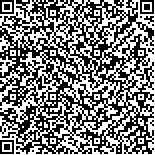张明,孙兴良,赵靖,等.神经重症康复病房气管切开术后拔管困难患者的临床特点分析[J].中华物理医学与康复杂志,2023,45(6):511-516
扫码阅读全文

|
| 神经重症康复病房气管切开术后拔管困难患者的临床特点分析 |
|
| |
| DOI:10.3760/cma.j.issn.0254-1424.2023.06.006 |
| 中文关键词: 神经重症康复病房 气管切开术 拔管困难 纤维内窥镜检查 危险因素 |
| 英文关键词: Neurology Intensive care Tracheotomy Decannulation Fiberoptics Endoscopic examination Risk factors |
| 基金项目:淄博市医药卫生科研项目(20231300091) |
|
| 摘要点击次数: 4663 |
| 全文下载次数: 4874 |
| 中文摘要: |
| 目的 探讨神经重症康复病房气管切开术后拔管困难患者的临床特点。 方法 回顾性分析2015年1月至2019年5月由淄博市中心医院康复科神经重症康复病房收治的气管切开术后患者122例,根据患者是否成功拔管分为2组,拔管成功组(73例)和拔管困难组(49例)。采用全面无反应性量表(FOUR)和昏迷恢复量表(CRS-R)评定患者的意识状态,采用口腔摄入功能量表(FOIS)评定患者的进食能力,采用纤维内窥喉镜观察气道解剖结构,采用Marianjoy分泌物五分评分量表、Rosenbek渗漏-误吸量表(PAS)行分泌物潴留及吞咽误吸评分。先采用单因素分析,再进行多因素Logistic回归分析,筛选危险因素。 结果 单因素分析显示,年龄、意识状态、吞咽功能、分泌物潴留、误吸和声门开放水平可能是影响神经重症气管切开术后患者拔管的因素(P<0.05)。Logistic回归分析显示,咽喉部分泌物潴留多[OR=9.380,95%CI(3.010,29.231),P<0.05]和声门开放水平差[OR=0.186,95%CI(0.083,0.417),P<0.05]是神经重症气管切开术后患者拔管的危险因素。 结论 咽喉部分泌物潴留多和声门开放水平差是神经重症气管切开术后患者拔管困难的独立危险因素。纤维内窥喉镜在诊治过程中起着十分重要的作用。 |
| 英文摘要: |
| Objective To study the clinical characteristics of patients with difficulty in decannulation after a tracheotomy in a neurological intensive care unit. Methods A total of 122 patients undergoing tracheotomy were divided into a decannulation success group (n=73) and a difficult decannulation group (n=49). The Full Outline of Unresponsiveness (FOUR) and the revised version of the Coma Recovery Scale (CRS-R) were used to assess the consciousness of those in both groups. Their swallowing ability, airway anatomy, secretion retention and aspiration were documented using the Functional Oral Intake Scale (FOIS), fiberoptic endoscopic examination, Marianjoy′s 5-point secretion severity scale and the penetration-aspiration scale (PAS). Univariate analysis and multiva-riate logistic regression analysis were conducted to isolate risk factors. Results The univariate analysis showed that age, status of consciousness, swallowing ability, secretion retention, aspiration and opening of the glottis may be indicators of difficult decannulation after a tracheotomy among those with severe neurological diseases. The logistic regression analysis found that too much retention of pharyngeal secretions and insufficient opening of the glottis should also be treated as risk factors for difficult decannulation with such patients. Conclusions Too much retention of pharyngeal secretions and poor opening of the glottis are independent risk factors for difficult decannulation after a tracheotomy. Endoscopic examination can play an important role in the prediction and treatment of difficult decannulation. |
|
查看全文
查看/发表评论 下载PDF阅读器 |
| 关闭 |